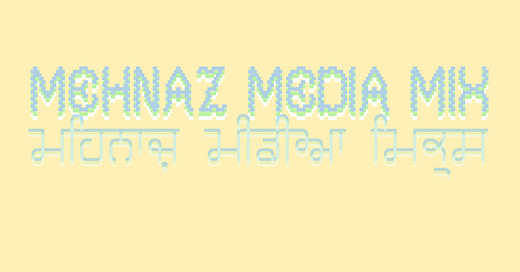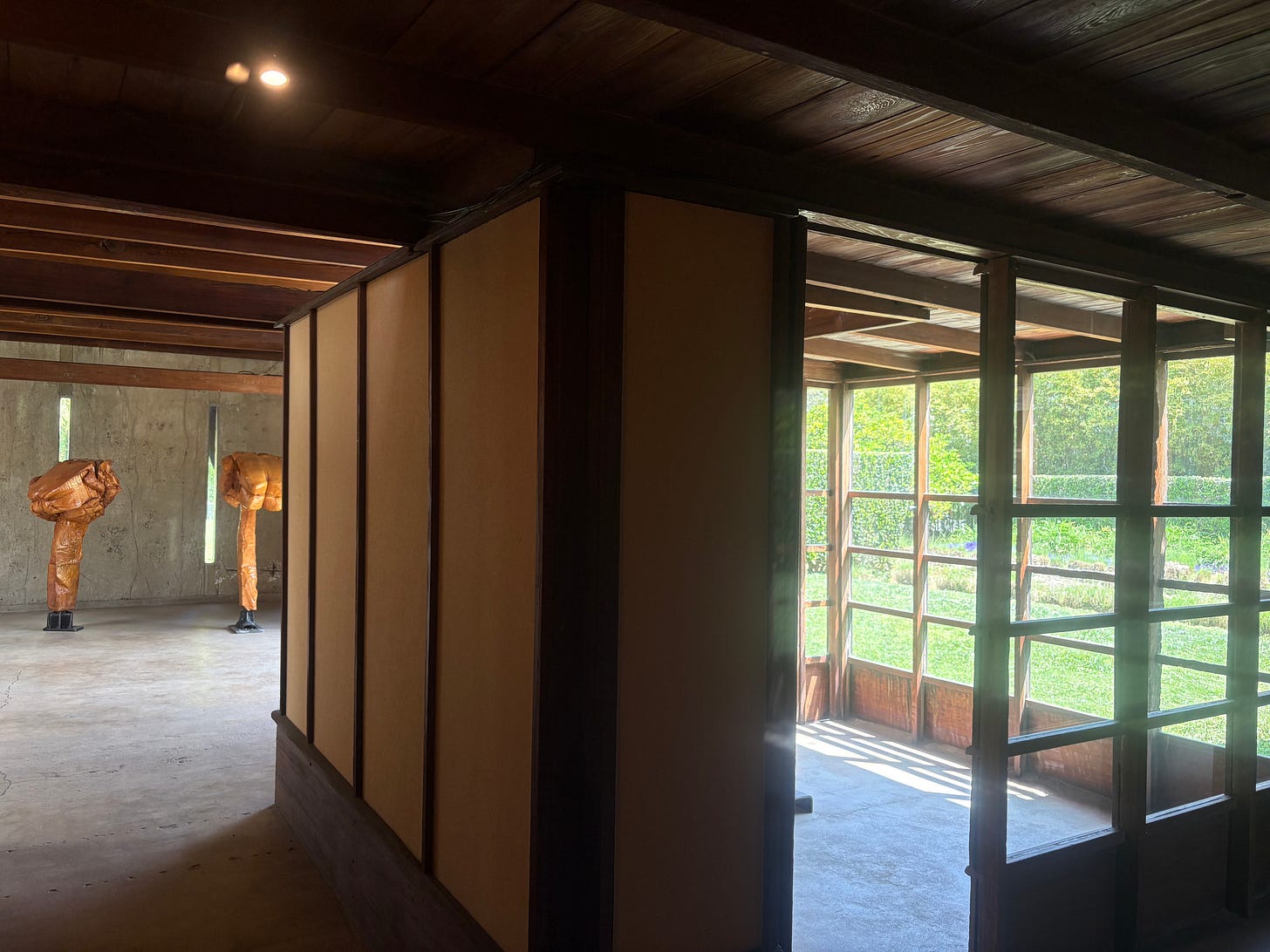Lots of reading and taking in things this month. And thus less writing. More writing next month.
Today, April 30th, I’m seated on a simple, shaded chair facing a garden. From where I’m seated, I can see the sunshine reflecting off of, and hear the leaves gently caressing the California redwood exterior of the Schindler House. It's a perfect day to see the manifestations of the not-yet-too-hot Los Angeles sunshine and breeze. Today when visiting this house, I experienced the beautiful capabilities of architectural innovation. Sunlight flooded into the home at junctures both expected and unexpected. A living room wall entirely dedicated to a window for light, yes, but also slivers of diffused glass in the bathroom that wash the redwood interiors of home with a gentler light than that of the living room. To me, the house felt like a joyful love affair with the natural beauty by which it is surrounded– rather than an estranged neighbor whose concrete has nothing to do with the trees that happen to be near it. As my wise friend Aidan once said… architecture can create space for things to go right.
Some poignant sentences from the Museum’s guidebook:
“There is no traditional front facade of the Schindler House. The experience of the building is only achieved by moving through it.”
“The heavy concrete is balanced with the more fragile redwood and the lightness of the insulation board.”
“In my own house I introduced features which seemed to be necessary for life in California: an open plan, flat on the ground; living patios; glass walls; wide sliding doors; clerestory windows; shed roofs with wide shading overhangs. These features have now been accepted generally and form the basis of the contemporary California house.”
“The generally low profile of the house functions towards the same end, keeping the experience of the house close to the earth”
“[The floor plan] was the realization of a social experiment, a lofty vision and earthbound presence that prized the solitude required for artistic production and encouraged the flow of ideas and open space.”
No real theme this month other than my desire for all you readers to soon experience the peace and contentment I feel today.
Miscellaneous Mix
Slouching Towards Bethlehem | Book by Joan Didion, 1968
“Nothing was irrevocable; everything was within reach. Just around every corner lay something curious and interesting, something I had never before seen or done or known about.”
“All the sweet promises of money and summer…” (235)
On Breakups | Essay by Hanif Abdurraqib, 2019
“So much of heartbreak is an animal born from past desires. Not just the desires themselves, but the things those desires asked us to ignore. Every person has things that can be easily forgiven in the right moment or the right season. I have known exactly how relationships would end, and I entered them anyway. The ego is always built into emotional undoing—to imagine myself as the one who will love someone into correction, even though I have never been loved so much that love alone undid the worst of me.”
Wage Theft Monitor
Interesting to look at this and think about what crimes get the most airtime. Shoplifting as compared to wage theft, for example. And who is harmed by this differential coverage?
Stuart Hall, et al.: "Policing the Crisis: Mugging, the State, and Law and Order"
"From these conclusions, we can quickly gather that this book is not about the causes of mugging. There is nothing here of traditional criminology either in the liberal version emphasizing inferior socialization and bad environmental conditions or in the conservative version emphasizing the immorality and inferiority of the criminal. The act of mugging is rather the occasion for a much larger ideology and social control. First of all, this is a study of the societal reaction to mugging, the production of the label by the dominant control-culture. Secondly, and more fundamentally from the author's viewpoint, it is a historical and structural study of how the new law and order ideology serves the increasingly repressive and "interventionist" state. Finally, this is a study of racism, the criminalization of the young black victims of unemployment, and the linking of policing crime with policing the economic crisis... mugging is symptomatic of a 'moral panic'".
The Landkeeper | Song by Men I Trust, 2025
Morning dew on cherry trees
Fruits that carry tears
The soul and heart retrieves
So many stories, many deeds
About the man who grafted breeds
Instead of sowing seeds
And he lives on, in the land's memories
Drawings by Blahjinder, 2025
“This was inspired by words shared by Sant Gyani Inderjeet Singh Ji Raqbewale, from a YouTube video posted by Manglacharan. Gyani Ji was describing anand (bliss) as the stillness of the mind, and the distinction between temporary anand and the everlasting anand of brahm (the divine).”
The Construction of Religious Boundaries | Book by Harjot Oberoi, 1994
"In this sense, the history of Sikh tradition is radically different from, say, early Christianity, which from the very beginning had a dominant concern with demarcating believers and non-believers: within less than a century of its formation, Christian church leaders had begun to excommunicate those within the church who transgressed its systematized beliefs. Such modes of exclusion, of publicizing the boundaries of belief and practice, were quite alien to the Sikh tradition.” (48)
Thanks for reading my lovelies. This is edition number four and it feels so good. Your alls feedback means the world because you are all the smartest and coolest people I know.






Vaah ji Vaah!